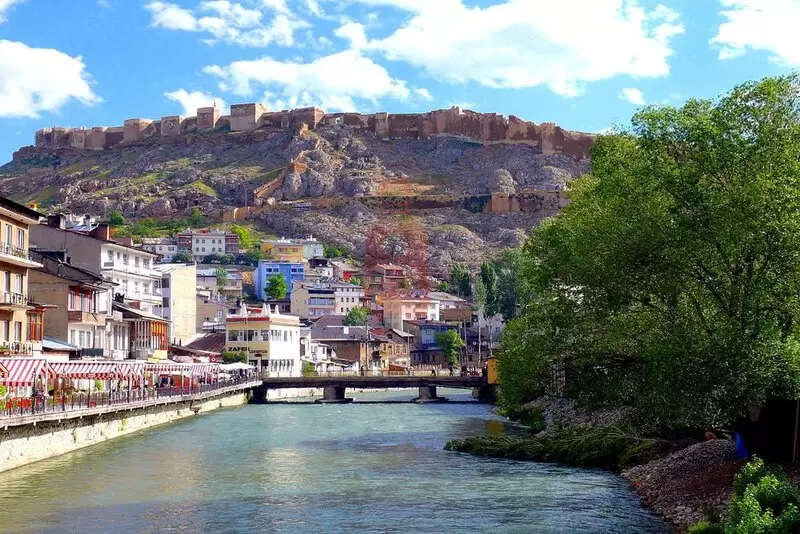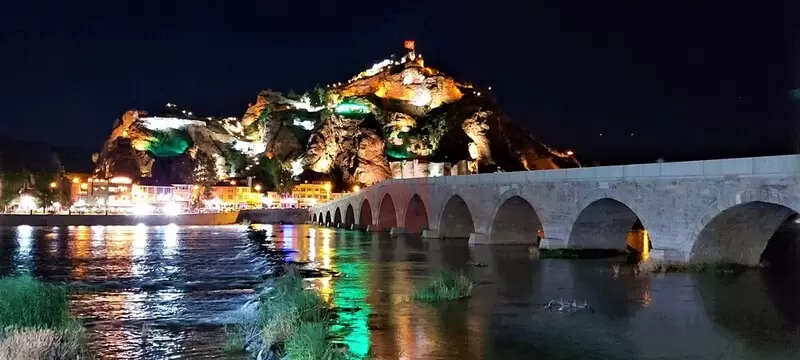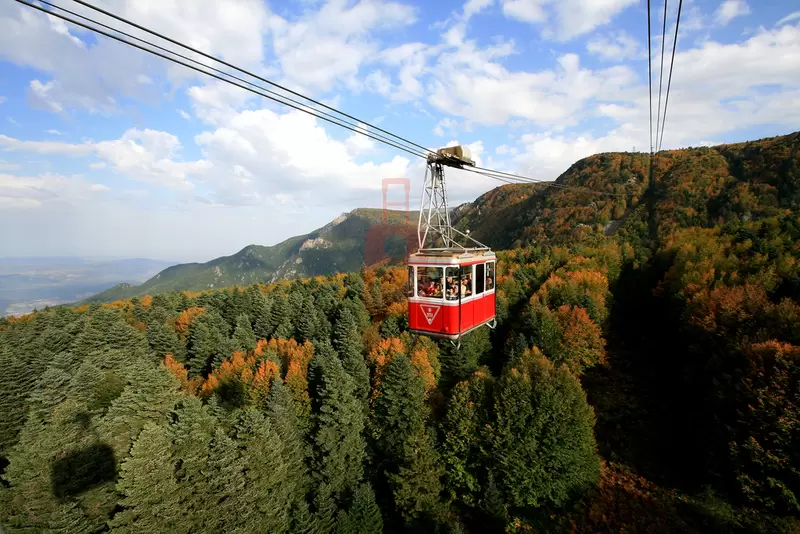
Bayburt, a small but historically rich city in northeastern Turkey, offers a variety of experiences for travelers interested in history, nature, and culture. While it may not be as well-known as some of Turkey’s larger cities, Bayburt is a hidden gem with a lot to offer. Its strategic location along the historical Silk Road has made it a place of cultural significance for centuries. Whether you’re interested in exploring ancient fortresses, delving into underground cities, or enjoying the natural beauty of the surrounding mountains and rivers, Bayburt has something for everyone. Here are the top 10 things to do in Bayburt.
Bayburt Castle is one of the city’s most iconic landmarks and a must-visit for anyone coming to the area. Perched on a hill overlooking the city, this ancient fortress offers stunning panoramic views of the surrounding landscape. The castle dates back to Roman times and has been used throughout history by various civilizations, including the Byzantines and the Ottomans. The fortress has undergone several restorations over the centuries, and while much of it is in ruins, visitors can still explore its walls, towers, and gates. The view from the top is particularly breathtaking, especially at sunset, when the city below is bathed in a golden light. Bayburt Castle is a great starting point for getting a sense of the city’s rich history and strategic importance.
Aydıntepe Underground City is another fascinating historical site in Bayburt. This underground city, located in the town of Aydıntepe, about 25 kilometers from Bayburt, is an intricate network of tunnels and chambers carved into the rock. It is believed that the underground city was used as a shelter and place of refuge during times of war and invasion. The tunnels are thought to have been created in the early Byzantine period, and they extend for several kilometers beneath the town. Visitors can explore some of the passageways and rooms, which provide a unique glimpse into how people lived and survived underground. The temperature inside the underground city remains cool throughout the year, making it a refreshing escape on a hot summer day. Aydıntepe Underground City is an extraordinary and lesser-known historical site that offers a completely different perspective on the region’s past.
For those who love nature, Kop Mountain National Park is a must-see destination. Located about 30 kilometers from Bayburt, this national park is known for its rugged mountain landscapes, diverse wildlife, and beautiful hiking trails. Kop Mountain is part of the Eastern Black Sea mountain range and offers some of the most stunning natural scenery in the region. The park is home to a variety of plant and animal species, including wild goats, foxes, and eagles. Hiking in the national park is a popular activity, with trails that take you through forests, meadows, and rocky terrains. In the winter, Kop Mountain becomes a popular destination for skiing and snowboarding. Whether you visit in the summer or winter, Kop Mountain National Park offers a peaceful retreat into nature, away from the hustle and bustle of city life.
The Çimağıl Cave is another natural wonder in Bayburt that should not be missed. Located about 35 kilometers from the city center, this cave is famous for its intricate formations of stalactites and stalagmites. The cave extends for several kilometers, and visitors can explore its vast chambers, which are illuminated to highlight the stunning rock formations. The cave is also home to underground lakes and streams, adding to its magical atmosphere. Çimağıl Cave is one of the largest and most impressive caves in the region, and it offers a great adventure for those who enjoy exploring natural wonders. Be sure to bring a flashlight and wear comfortable shoes, as the ground inside the cave can be uneven and slippery.
Bayburt’s cultural heritage is also evident in its religious architecture, with the Ulu Mosque being one of the most important historical buildings in the city. Built during the Seljuk period in the 12th century, this mosque is one of the oldest in the region and is still in use today. The mosque’s simple yet elegant design reflects the architectural style of the Seljuk era, with its large central dome, pointed arches, and intricate stone carvings. The Ulu Mosque is a peaceful place to visit, and it provides insight into the religious and cultural life of Bayburt’s residents over the centuries. Visitors are welcome to explore the mosque’s interior, but it’s important to dress modestly and be respectful of the religious customs.
The Saat Kule, or Clock Tower, is another iconic landmark in Bayburt. Located in the city center, this historical clock tower was built in the early 20th century and has become a symbol of the city. The tower’s design is reminiscent of Ottoman architecture, with its elegant stonework and domed top. The clock tower is surrounded by a small square where locals gather, and it’s a great spot to sit and enjoy a coffee while soaking in the atmosphere of the city. The Saat Kule is also beautifully illuminated at night, making it a picturesque sight after dark.
For those interested in the local history of the Silk Road, a visit to the Bayburt Stone Bridge is a must. This historical bridge, which spans the Çoruh River, was an important crossing point along the ancient Silk Road, connecting traders and travelers from different parts of the world. The bridge has been restored multiple times throughout history, but its original design dates back to the medieval period. Walking across the bridge provides a sense of the historical significance of Bayburt as a key stop along this famous trade route. The Çoruh River, which flows beneath the bridge, is one of the fastest-flowing rivers in Turkey and is popular for white-water rafting and other water sports.
Bayburt is also home to the Baksı Museum, a contemporary art museum located in a rural village about 45 kilometers from the city. The museum was founded by Turkish artist Hüsamettin Koçan and showcases both contemporary art and traditional Turkish crafts. The museum’s location, perched on a hill overlooking the Çoruh River Valley, adds to its appeal, offering stunning views of the surrounding landscape. The Baksı Museum is unique in its mission to bring art and culture to rural communities, and it provides a fascinating blend of modern and traditional artistic expressions. Visitors can explore the museum’s galleries, participate in workshops, and learn about the rich cultural heritage of the region.
Bayburt’s connection to the Silk Road can also be experienced by taking a scenic drive along the historical route that passes through the region. The Silk Road was once the main trade route between Europe and Asia, and Bayburt was an important stop along the way. Today, travelers can follow parts of this ancient route, passing through beautiful mountain landscapes, small villages, and historical landmarks. The drive offers a unique opportunity to experience the stunning natural beauty of the region while also reflecting on the historical significance of the Silk Road.
Finally, no visit to Bayburt would be complete without experiencing the warmth and hospitality of the local people. Bayburt is known for its friendly and welcoming residents, who take pride in their city’s history and culture. Visitors are often invited to share a meal or tea with locals, providing a chance to learn more about the region’s traditions and way of life. Be sure to try some of the local dishes, such as Bayburt’s famous honey, which is produced in the surrounding mountains and is known for its rich flavor and high quality.
In conclusion, Bayburt may be a small city, but it is filled with historical, cultural, and natural treasures waiting to be discovered. From ancient castles and underground cities to stunning mountain landscapes and contemporary art museums, Bayburt offers a unique and enriching travel experience. Whether you’re interested in history, nature, or simply exploring off-the-beaten-path destinations, Bayburt has something to offer every traveler.













